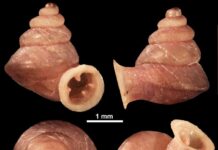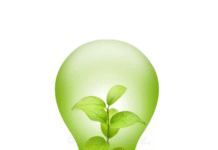
Recent Kim Kim River toxic pollution incident has raised eyebrows and sparked anger of Malaysian public about the irresponsible act of water pollution. Although this is an extreme pollution case of toxic proportion, day-to-day mining activities will leave behind mine wastes which may contain toxic chemicals such as arsenic that might be leached out during the refining process. Scientists are now using plants to remediate this hidden threat, and literally turning mine tailings into gold nanoparticles for industrial use. The Petri Dish (PD), guest writer, SHAWN KENG interviewed International Islamic University Malaysia’s Dr Zakuan Azizi Shamsul Harumain (ZA) – to explain what phytomining and phytoremediation are, and its promising “Midas Touch” potential in turning mine tailings into mine treasures.
PD: Could you explain to the readers about phytomining in one or two simple sentences?
ZA: Phytomining is the use of plants to take up metals from sub-economic ore bodies or contaminated mine sites with the additional aim of recovery of economic amount of metals. Interestingly, plants also have the ability to form metal nanoparticles, which can eventually be harvested and re-used as catalysts in many chemical reactions.
PD: How does phytomining contribute to wastewater management, in light of recent polluted river cases?
ZA: Phytomining is actually a subset of phytoextraction. In phytoremediation, phytoextraction plays an important role in taking up high levels of metals from soil or groundwater to be accumulated in the upper part of plants. Similar principal can also be applied towards remediating contaminated lands. In the light of the recent case in Kim Kim River, phytoextraction is much more suitable for a long term treatment along the river banks. Few local plant species have been shown to remediate areas contaminated with hydrocarbon compounds and heavy metals such as copper and chromium.
PD: How did your research team in International Islamic University Malaysia (IIUM) saw the importance and potential of phytomining? How did it all started?
ZA: My PhD in York was in phytomining of precious metals such as palladium and gold from mine wastes. When I came back to Malaysia in 2017, I realised that phytomining can also be applied here considering that our country, especially the state of Pahang, is one of the biggest gold producer in south east Asia. Our climate condition is also suitable for plants to grow all year round. At the moment, no phytomining activities to recover precious metals from mine wastes are being conducted at any old mining sites all across peninsular of Malaysia. Therefore, I took this opportunity to become one of the pioneer of phytomining in Malaysia.

PD: How does phytomining or phytoextraction in general work?
ZA: Basically, the plant has the roots which absorb the minerals, transport those minerals through xylem channels inside the trunk, and ultimately capture those minerals inside the cell walls of leaves and branches. Imagine the plants are natural yet specialised sponges soaking up free minerals from our mining areas.
PD: Could you share some examples of plants with phytomining capabilities?
ZA: Together with my team in York, Prof Neil Bruce and Dr Liz Rylott, we have worked on phytomining of precious metals using non-hyperaccumulator plants such as Willow sp and Miscanthus sp as well as hyperaccumulator species like Brassica sp which was later published in EST in 2017. We have also looked at the genetic response of plants when exposed to precious metals like gold and palladium as well as looking at the function of different plant transporters potentially involved in precious metal uptake in plants. Currently, my research student is working on local plant species to remediate Arsenic, which is also present in mine tailings.
PD: How would you identify the right plant for the right function and right minerals/pollutants?
ZA: In phytomining or phytoremediation, different strategies can be tested depending on the type of targeted pollutants or heavy metals. To identify the suitable plant species, we also have to look at the condition or type of the soil as well as the environment on whether it is suitable for that specific plant to grow. In the literature, there are so many works done on the uptake of common heavy metals such as copper and chromium by different plant species.
Sometimes, genetic engineering is required as most plants cannot tolerate with even low levels of certain toxic metals such as mercury and arsenic. For example, in 1996, Clayton Rugh and his team managed to express a bacterial merA gene in Arabidopsis which increased its tolerance to toxic level of mercury. A subsequent from this was the development of mercury resistance plants such as tobacco and even rice. So as a start, understanding even the characteristic of the targeted metals or pollutants would be very helpful in determining the type of suitable plants for the treatment.

PD: What happens to the post-phytomining plant? Will it be harmful for animals to consume?
ZA: My group in York has published a method on extracting the precious metals in nanoparticle form from plant tissues in 2014. Therefore, there is no issue regarding the fate of the post-phytomining plant. Talking about its effect on animals, obviously if the heavy metals accumulated in the plant tissue is very high, it will definitely pose a serious health threat to the animals.
However, if phytomining is really going to take place, a proper management plan is required to avoid from animal to trespass the area. In the end, phytomining is all about getting an economical value from the activity, thus we don’t want to lose any precious metals in the animals tummy! Furthermore, talking about health effect, gold nanoparticle is also widely used in biomedical application such as in drug delivery.
PD: What challenges are faced by your research team? How did your team overcome them?
ZA: As an early career researcher like me, I have to admit that it is not that easy to conduct my research here due to limited funding and facilities in my university. The highest cost for phytomining comes from the quantification method of the accumulated metals using high end instruments such ICP-MS and AAS. At the moment, I am using whatever I have to slowly conduct my research in phytomining and at the same time building my reputation and networks with the industry in hoping that my research can be funded.
In terms of research operations, the biggest challenge in phytomining is on the bioavailability of the precious metals to be taken up by plants. Gold and other precious metals have a very low solubility in nature. Furthermore, the amount of precious metals residue in mine wastes is very low as most of it has been taken up using chemical method. To overcome this, we are looking at other approaches such as genetic engineering to improve its solubility and its uptake into plants.
PD: How do you see your research team in the next five years? What is needed to push this research further?
ZA: I would say that, in the next five years, at least we have managed to test our findings in situ. This is my ultimate goal as a scientist, to see it works in real environment so that all of us including the nature can benefit from this research. The only thing needed is sufficient financial support especially for an early career researcher from a non-research university like me.
PD: For phytomining, although the yield is low and yet to be tested in situ, is there any hypothetical return of investment for every hectare of such plants?
ZA: Talking about the hypothetical return of the investment in phytomining, a technical feasibility and economic viability study has been conducted in 2009, by scientists at the University of Sydney, Australia on nickel and gold phytomining. They estimated that, at 2009 market values, the profit gain from nickel and gold phytomining, including the biomass energy produced, could generate approximately 11,500 and 26,000 AU$/ha/harvest using Brassica juncea for nickel and Berkheya coddii for gold respectively.
PD: Any concluding remarks?
ZA: I personally hope that the government can start to recognise this field as an important field to be focused on not only bring economical impact towards the government but also to help to re-vegetate contaminated old mining areas for future use. If any of the readers would like to know more about phytomining, you can email me at zak@iium.edu.my“.
NOTE: Shawn Keng works in Group Marketing & Communications at Malaysian Genomics Resource Centre, and serves as the curator for Science Cafe KL – an initiative by Science Communication Working Group in Young Scientist Network, Academy of Sciences Malaysia (YSN-ASM). He also serves as Industry Adjunct at INTI University.
















